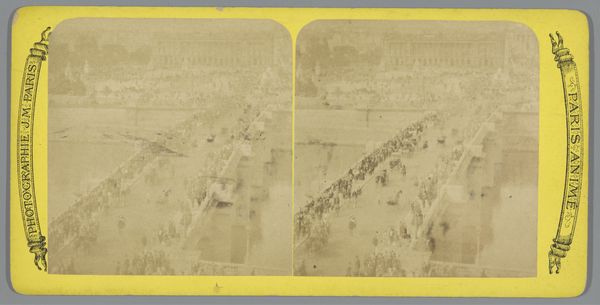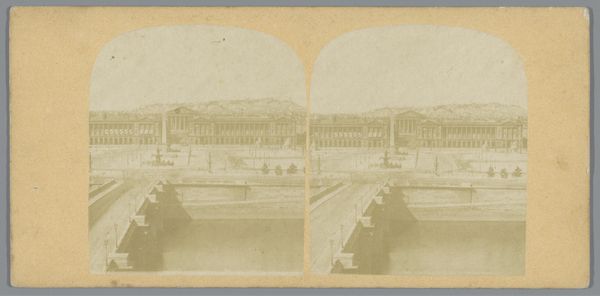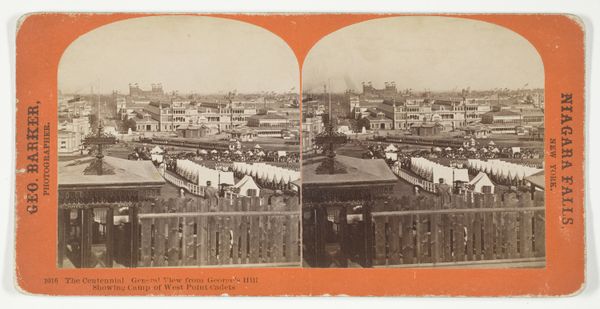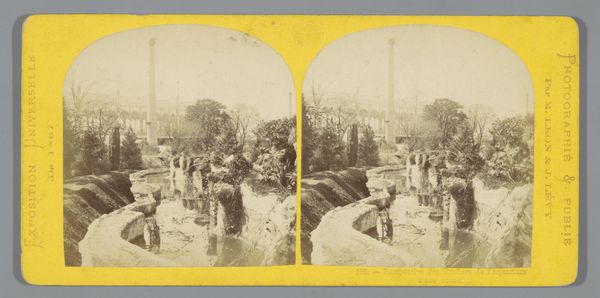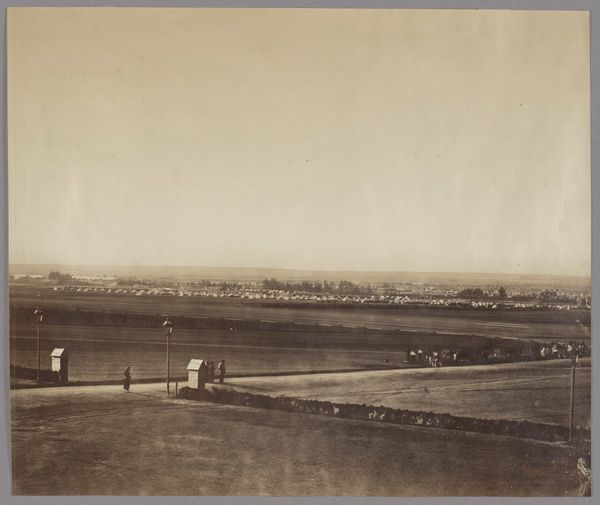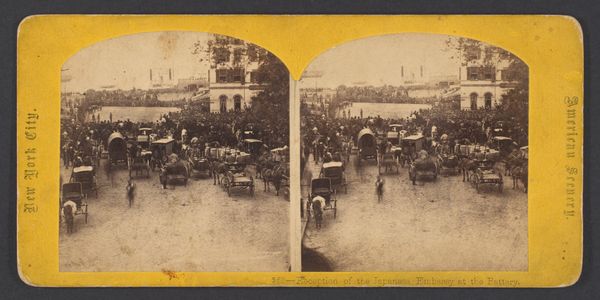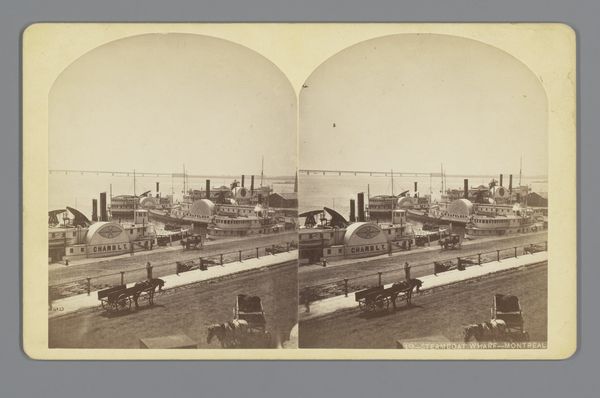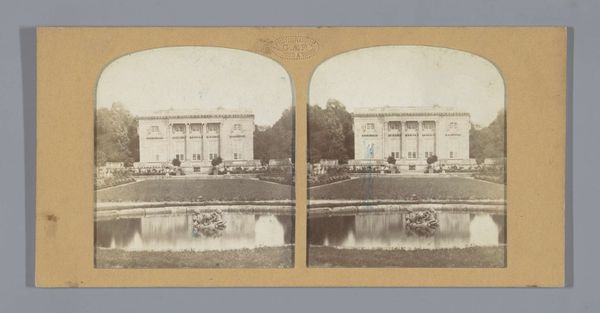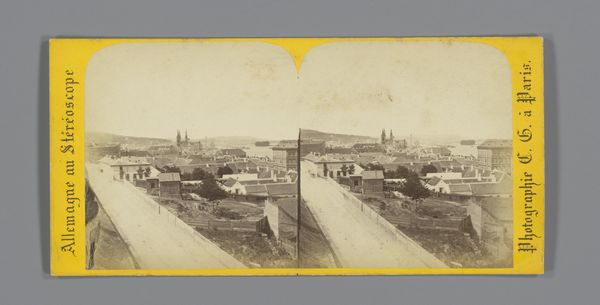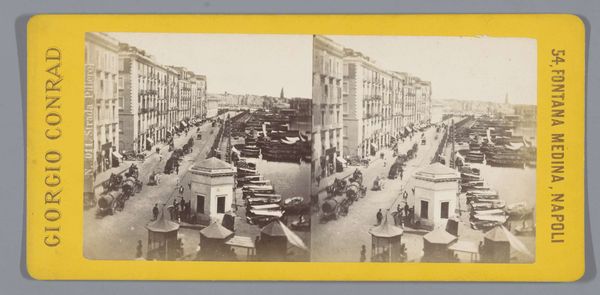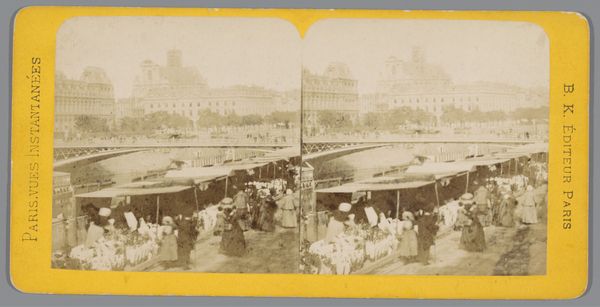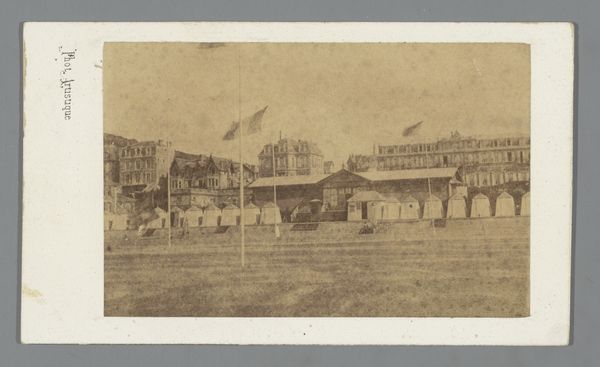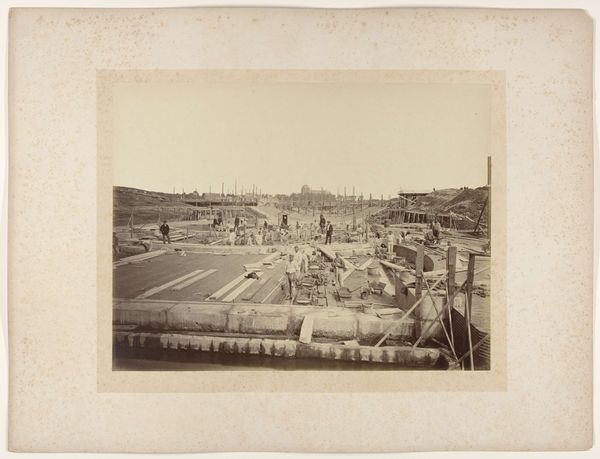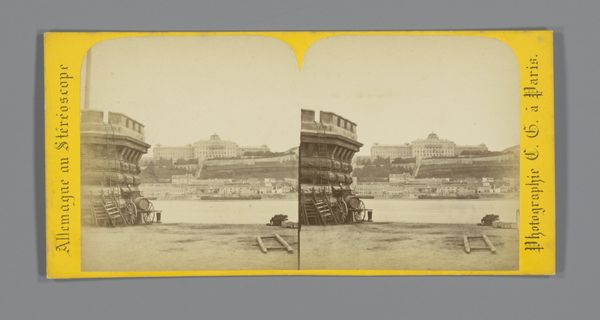
Dimensions: height 83 mm, width 171 mm
Copyright: Rijks Museum: Open Domain
Editor: This is “Gezicht op het terrein van de Wereldtentoonstelling van 1867,” a collotype photograph from 1867 by Léon & Lévy. It's such an interesting view, almost like an early drone shot. What jumps out to you about this piece? Curator: For me, it’s the collotype process itself. Think about the labour involved in producing this image, this artifact. It speaks volumes about industrialisation. Each print necessitates careful preparation, skillful printing, a tangible commitment from those involved. How does this production challenge conventional views of fine art versus mere reproduction? Editor: I never considered that! I guess I just assumed photography was always easily reproducible. What does the collotype process suggest about the social context surrounding the World's Fair itself? Curator: Absolutely. Collotype offered a relatively stable way to generate images on a scale suited for a project celebrating industry and technology. In contrast, processes that involve an engraver require far more labour, which raises important questions about cost, access, and audience. Was it meant for a wide distribution, or only certain classes? What does its availability communicate? Editor: That makes sense. The photo looks both industrial and sort of Romantic with its misty distance and old-time feel. It feels very self-aware. Curator: Precisely. By understanding how the image was made, by whom and for what audience, the relationship between photographic reproducibility, consumerism, and art history opens to scrutiny. Considering who this "view" benefits gives us a sharper critical perspective. Editor: This has totally changed how I see it. Thanks! I'll definitely be thinking about the labor involved in making art from now on. Curator: A closer inspection into an artwork's process makes every encounter all the richer.
Comments
No comments
Be the first to comment and join the conversation on the ultimate creative platform.
